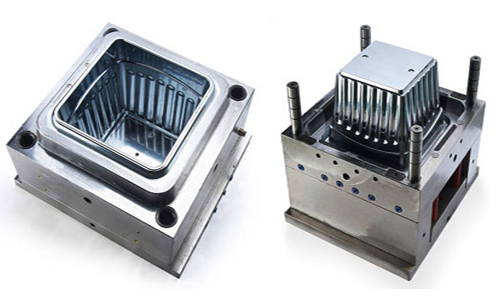 CN
CN info@seacomould.com
info@seacomould.com +86-18969612882
+86-18969612882
The most likely defects in the mold injection molding process
2019-11-16
There may be such problems in the mold injection molding process. What are the most likely defects? The author tells you that the most likely defects encountered in the mold injection molding process are as follows:
1. The characteristics of the injection molded parts are not complete because the mold cavity is not filled with plastic or the injection molding process lacks some details.

1. The characteristics of the injection molded parts are not complete because the mold cavity is not filled with plastic or the injection molding process lacks some details.
2. Reasons for possible problems,
- (1). Insufficient injection speed.
- (2). Plastic material shortage
- (3). The screw does not leave the screw pad at the end of the stroke.
- (4). Run time changes.
- (5). The temperature of the shooting tank is too low.
- (6). Injection pressure is insufficient.
- (7). The nozzle part is sealed.
- (8). The heater outside the nozzle or the shooting tank cannot operate.
- (9). The injection time is too short.
- (10). The plastic is attached to the throat wall of the hopper.
- (11). The capacity of the injection molding machine is too small (ie, injection weight or plasticizing ability).
- (12). The mold temperature is too low.
- (13). Anti-rust oil that does not clean the mold.
- (14). The retaining ring is damaged, and the melt has a backflow phenomenon.
3. Solution:
- (1). Increase the injection speed.
- (2). Check the amount of plastic in the hopper.
- (3). Check if the injection stroke is set correctly and change if necessary.
- (4). Check if the check valve is worn or cracked.
- (5). Check whether the operation is stable.
- (6). Increase the temperature of the melt.
- (7). Increase back pressure.
- (8). Increase the injection speed.
- (9). Check the nozzle hole for foreign matter or unplasticized plastic.
- (10). Check all the heater layers and check the energy output with an ammeter.
- (11). Increase the screw forward time.
- (12). Increase the cooling capacity of the throat of the hopper or reduce the temperature of the rear area of the shooting tank.
- (13). Use a larger injection molding machine.
- (14). Appropriately increase the mold temperature.
- (15). Clean the rust inhibitor in the mold.
- (16). Check or replace the check ring.
Differences in the size of the injection molded parts:
1. Characteristics of the defects of the injection molded parts:
The change in the weight size during the injection molding process exceeds the production capacity of the mold, the injection molding machine, and the plastic combination.2. Reasons for possible problems:
- (1). The plastic in the injection cylinder is not uniform.
- (2). The range of temperature or fluctuation of the shooting tank is too large.
- (3). The capacity of the injection molding machine is too small.
- (4). The injection pressure is unstable.
- (5). The screw reset is unstable.
- (6). Changes in operating time and inconsistent solution viscosity.
- (7). The injection speed (flow rate control) is unstable.
- (8). A plastic type that is not suitable for the mold is used.
- (9). Consider the influence of mold temperature, injection pressure, speed, time and pressure on the product.

Related Products
Latest Updated
- China automotive mold manufacturing is facing the development trend of 2025
- The major development trend of automotive mould technology
- How to find a good automotive mould supplier and manufacturer in China
- How to make the injection plastic mould gate design
- The most likely defects in the mold injection molding process
- Injection mold repair steps and precautions
- Auto mould making-automould injection moulding company
- How to choose plastic mould supplier in Taizhou China
Relative Articles
- How does the injection mold solve the scorch problem with exhaust
- How to solve common problems in plastic mold polishing
- injection problem-why welding line appears and how to solve it
- Why does the injection mold appear white? Injection mold problem of ejection white
- Analysis of common problems in injection molds
- Mechanism and Solution of Defects in Injection Molding
- what are the common problem in the plastic mould injection process
Hot Articles
- Mold plating chrome treatment technology is good for mold life
- Analysis of the causes of the fusion line of plastic mold products and corresponding improvement measures
- what are the common problem in the plastic mould injection process
- Leak-proof design of bottle cap mould
- What performance requirements should be met when selecting steel for injection mold
- When Huangyan Mold factory come back to work after coronavirus
- Coronavirus China Wuhan
- How to check the test of the injection mould
- How to choose plastic mould supplier in Taizhou China
- What principles should be followed in the design and development of bumpers mould
- Bottle cap mold manufacturing process
- Six standards for testing the quality of antifreeze bucket mould
Hot tags: china mold maker,taizhou,huangyan, suppliers, manufacturers, factory, maker,customized






